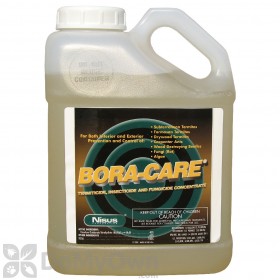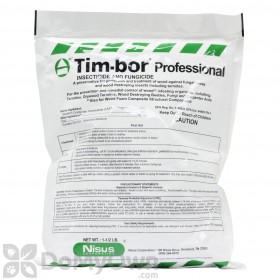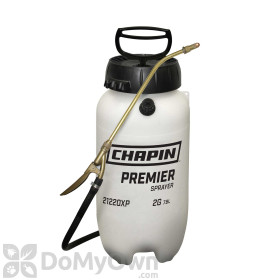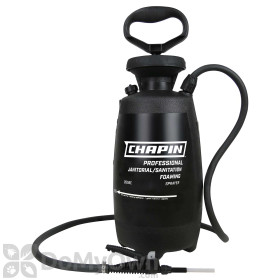What is Dry Rot or Wood Rot?
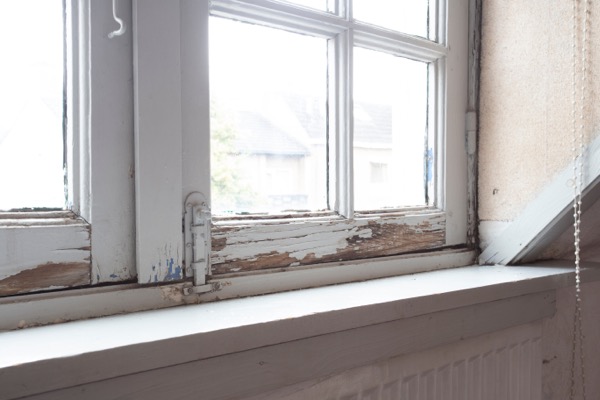
How to Identify Dry Rot
There are two primary types of wood rot which affect homes. These are easily distinguished by the color and texture of damaged wood.
- White Rot attacks primarily hardwoods and causes a white or yellow discoloration by attacking the cellulose and lignin in the wood. Eventually, the wood will develop a spongy touch and stringy appearance.
- Brown Rot attacks primarily softwoods and causes the wood to turn dark brown. Brown rot is often called "brown cubical rot" because of the way the wood can split across the grain, giving a checkerboard appearance or breaking off in cubes. Brown rot can weaken wood quickly, causing the wood to be very dry and powdery, hence the misleading nickname "dry rot."
There are also some wood decay fungi that product external fruiting bodies on decaying wood. These are usually a few inches in diameter and are often crusty with a waxy appearance. Spores can be seen when examined with a hand lens.
What Dry Rot is Not
Dry Rot is often mistaken for mold, termite damage, or carpenter ant damage, but in fact are very distinct differences between dry rot and these various types of wood damage.
- Mold is a type of fungi, and while they may discolor wood, they grow on the surface of woods and do not break down and weaken the wood. While the preventative control methods are essentially the same for general fungi and molds, the control methods vary; always consult a professional for mold treatments.
- Carpenter ant damage is identified by the removal of wood rather than its consumption. This kind of damage will be accompanied by small piles of sawdust and the presence of clean cavities where the ants live.
- Termite damage can be similar to dry rot in appearance, but it will be accompanied by termite galleries, live termites, and generally wetter wood.
How to Prevent Dry Rot and Wood Rot Fungus
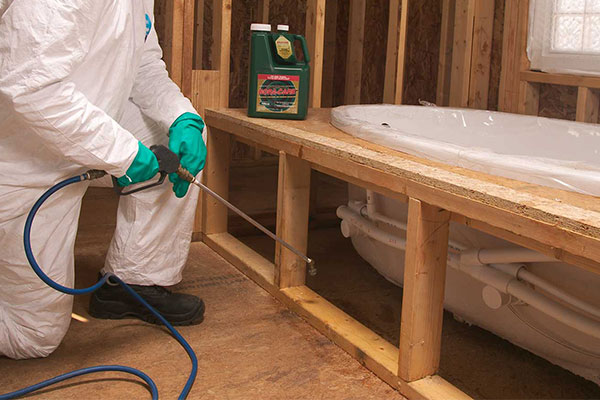
Moisture control is the key to preventing wood decay fungi from causing rot. Most wood decay fungi need a moisture content of at least 20% to survive. There are non-chemical and chemical means of moisture control to prevent wood decay fungi.
- For new construction, build on a well-drained site with proper grading, and install roof overhang, gutters, etc. to prevent water from seeping under the house.
- Untreated wood should be at least 18 inches from the ground.
- Vapor barriers such as plastic sheeting can be used on soil surfaces under the home and in crawl spaces.
- Ventilation of at least two square feet per 25 lineal feet of wall or one square foot for every 500 square feet of crawl space should exist under buildings. Ventilators may also be installed, but avoid placing dense foliage nearby.
- Dehumidifiers should be used in basements with moisture levels above 50%.
- Repair plumbing leaks quickly.
- Clear debris from rain gutters.
- Fix roof leaks promptly.
- Borates such as Bora-care and Tim-bor should be used on untreated wood that is not exposed to rain. These products can be sprayed, foamed, or brushed onto untreated wood to prevent infestations from wood decay fungi and other wood-destroying organisms.
How to Treat Existing Dry Rot and Wood Rot Fungus
Borates such as Bora-care and Tim-bor are labeled for remedial treatment of wood decay fungi. These products may be applied directly by brushing, spraying, or injection.
- Bora-care can be applied to all cellulosic materials. For remedial control, apply at a mix ratio of 1:1 on wood 4 inches or thicker or a ratio of 3:1 for wood with thickness less than 4 inches. See label for complete application instructions.
- Tim-bor can be applied using one coat of 15% or two coats of 10% solution. Tim-bor may also be dusted directly onto wood surfaces and into wall voids at a rate of two to three pounds per 100 square feet.
- Either mixture can be brushed or sprayed until the area is thoroughly wet. Mixture may also be applied by drilling and injecting the solution directly into infested areas, using enough mixture to cause runoff from exit holes.
Fungi will begin to die a few days after treatment and will dry up, though dead fungi will sometimes emit an odor as they decompose. This should only last a couple days and may be relieved with circulation of fresh air into the area.
Chemical control of wood decay fungi will NOT strengthen or repair the wood itself. Critical structural wood should be replaced in the case of severe damage or weakening. Moisture reduction and control efforts should also accompany repairs.




